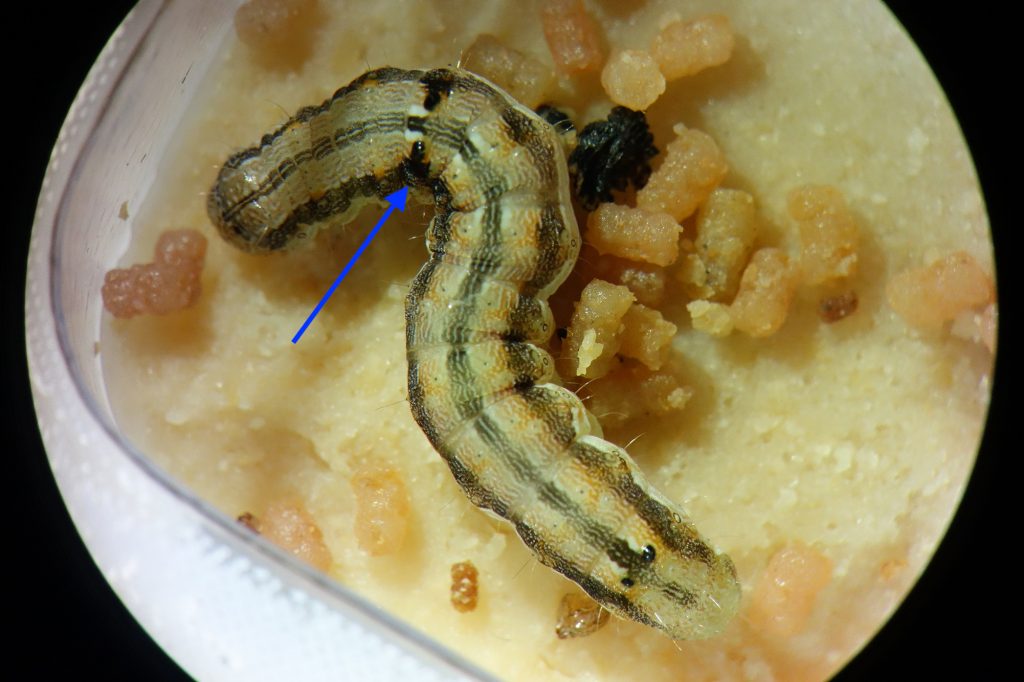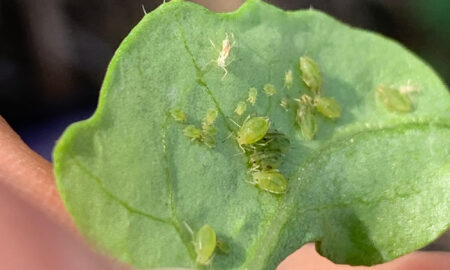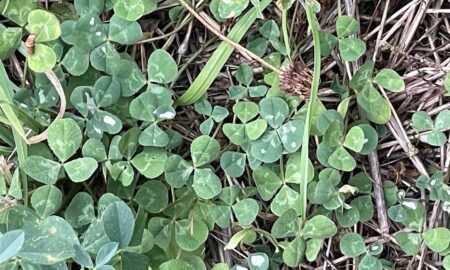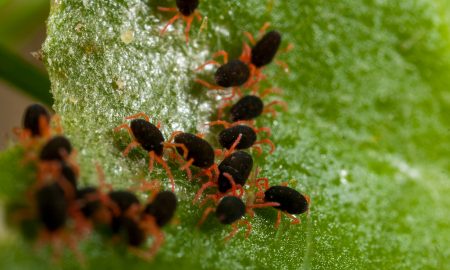Corn earworm moths have been caught in some regions of the NSW Central West Slopes and Plains. So, how can you distinguish between corn earworm and the closely related native budworm caterpillar?
Corn earworm (Helicoverpa armigera) moths have been caught in pheromone traps in the Forbes/Parkes region of NSW. One trap located in Parkes has caught between 4-19 moths per week for the past three weeks. Another trap located around Forbes caught one moth last week.
This suggests that corn earworm moths are laying eggs in crops in these regions. It is important to note that native budworm moths are also present and likely laying eggs in these areas.
These two species are major agricultural pests that overlap in their host range to an extent e.g. pulses and canola.
However, there is one key difference of utmost importance between these two species – corn earworm has developed resistance to insecticides and native budworm has not.
Helicoverpa identification
So, if Helicoverpa caterpillars are found infield, is it possible to distinguish the two species?
Maybe.
There are two features to look out for when distinguishing corn earworm caterpillars from native budworm.
However, it is important to note that these indicators are not always reliable, and they are often only visible on larger caterpillars (both species are best controlled while they are small – up to 7 mm in length).
The first feature is the dark ‘saddle’ on the fourth body segment on corn earworm. This is absent on native budworm.

The second feature is hair colouration. Around the head region, native budworm has black hairs, whereas corn earworm has white hairs. You will require a hand lens or camera lens to view this feature.


If you are in doubt, submit a live sample to our pest identification service.
If caterpillars are too small to distinguish between the two species, we recommend spraying a test strip, particularly if using synthetic pyrethroids.
If Helicoverpa caterpillars are found in cereals – it will likely be corn earworm, as native budworm is largely restricted to broadleaf hosts.
We encourage all growers and advisers who encounter corn earworm in grain crops to download and follow the Resistance management strategy for Helicoverpa armigera in Australian grains.
Do all regions have the same risk?
During the winter-cropping season, not all regions will be at risk from both species.
Native budworm moths are long distance fliers and arrive in Victoria and southern NSW during August and September.
Corn earworm moths on the other hand are not as migratory. The moths are generally thought to arise from local populations that survive over winter as pupae in winter crops, emerging with warmer spring temperatures.
Hence corn earworm damage is generally a problem in warmer regions such as northern New South Wales and southern Queensland during the winter-cropping season.
In southern NSW, corn earworm moths have been shown to emerge about 2 weeks later than reported in Northern NSW. This study which monitored the emergence of corn earworm near Griffith in southern NSW, found that moth emergence occurred mostly between mid-October to mid-November.
We currently have two pheromone traps monitoring corn earworm near Griffith and Deniliquin and only one moth has been caught in each trap since mid-August. We suspect that these two were actually native budworm, which can sometimes become bycatch in corn earworm traps.
In cooler regions, such as Victoria and Tasmania, corn earworm is generally only problematic in summer crops – by the time they emerge in these cooler regions, winter crops have finished, or harvest is underway, and they are no longer at risk.
For further information on corn earworm visit our comprehensive PestNote.
Many thanks to the coordinators and counters participating in our moth trap program.
Cover image: Photo by Andrew Weeks, Cesar Australia





